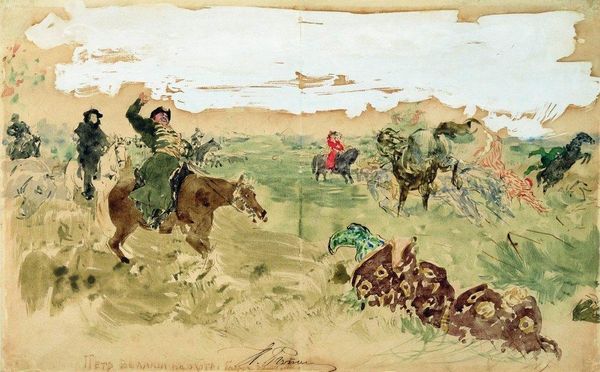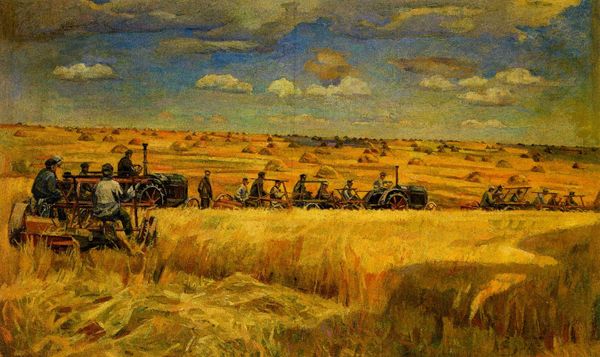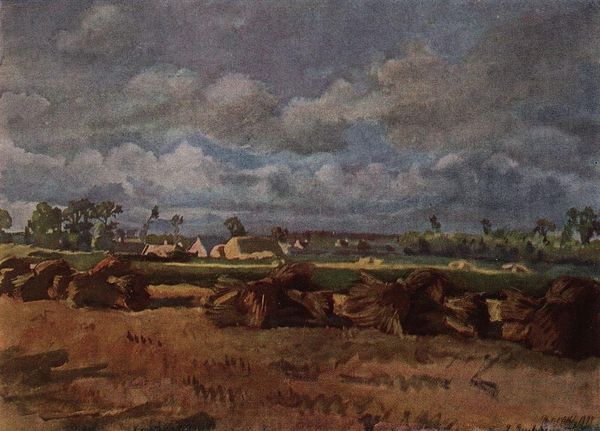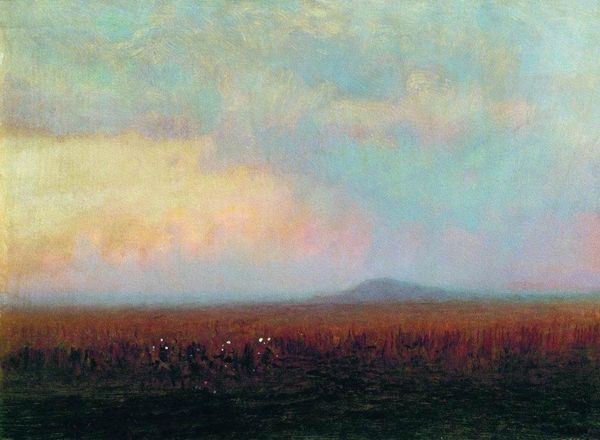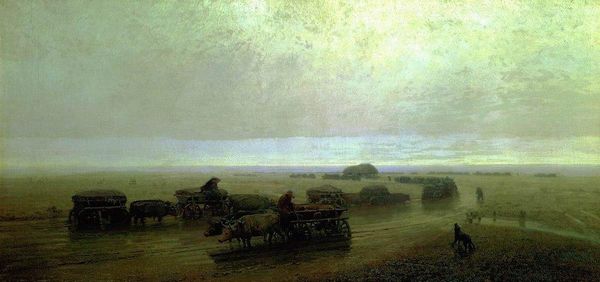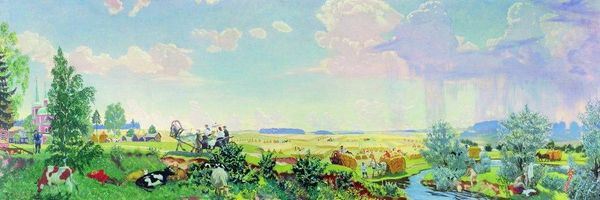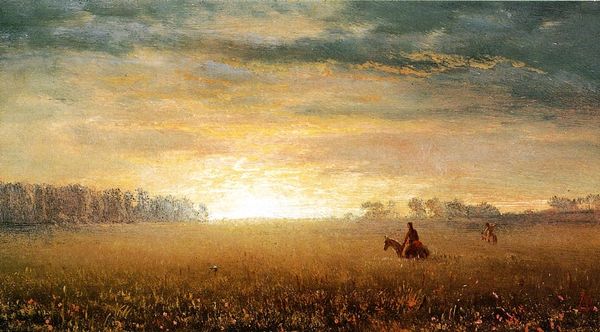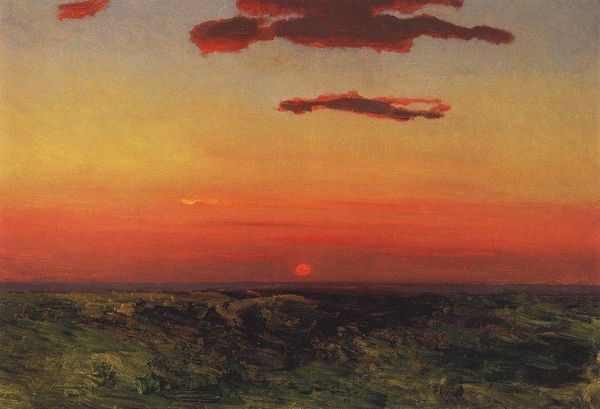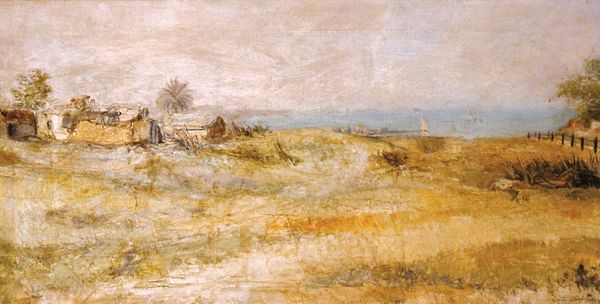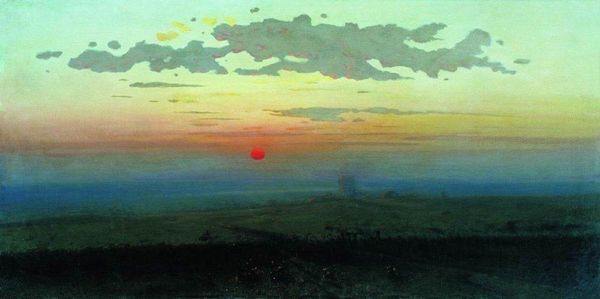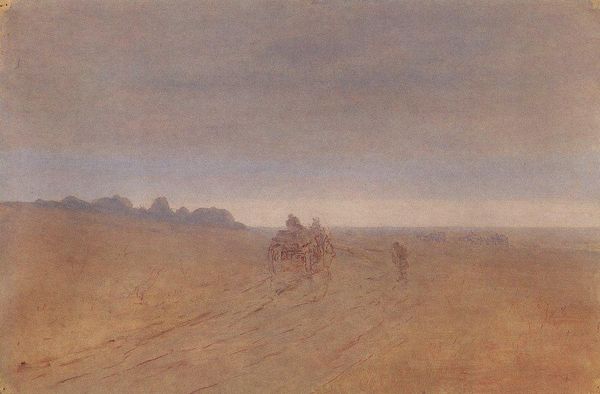
Copyright: Public domain
Editor: So, this oil painting is entitled "Campfire. Kachanovka", created in 1888 by Konstantin Makovsky. I’m really drawn to the dreamy sunset sky, but I'm also a little confused by what's happening in the field. What do you see in this piece? Curator: I see a snapshot of 19th-century rural life, likely depicting peasants resting or perhaps even laborers pausing during harvest time. Look at the social dynamics implied by the composition. How does Makovsky position the working class within this idyllic landscape? Is this a romanticized view or a reflection of reality? Editor: I suppose the rosy sky does add a romantic touch, but wouldn’t a 'true' depiction show their actual labor, the toil, instead of a pleasant campfire scene? Curator: Exactly! Consider that Makovsky, though celebrated, was painting for a specific audience – often the upper classes. The portrayal of the peasantry and rural life often played into pre-existing expectations and biases held by wealthy patrons. What’s emphasized, and what’s left out, reveals a lot about the artist's intention and the painting’s socio-political context. Editor: So the beauty kind of hides the whole picture... like the scene’s being consumed? Curator: Yes, you have it! Art serves specific cultural purposes and the aesthetic appeal often overshadows its connection to society and politics. The placement of this landscape in the Russian art world can reveal the artist's values. Editor: Wow, I definitely learned to look beyond just the immediate visuals! Thanks for that. Curator: And I'm reminded how impactful examining art through its political framework is for unlocking narratives of marginalized peoples, social tensions and the forces that shaped culture in 19th century Russia.
Comments
No comments
Be the first to comment and join the conversation on the ultimate creative platform.
